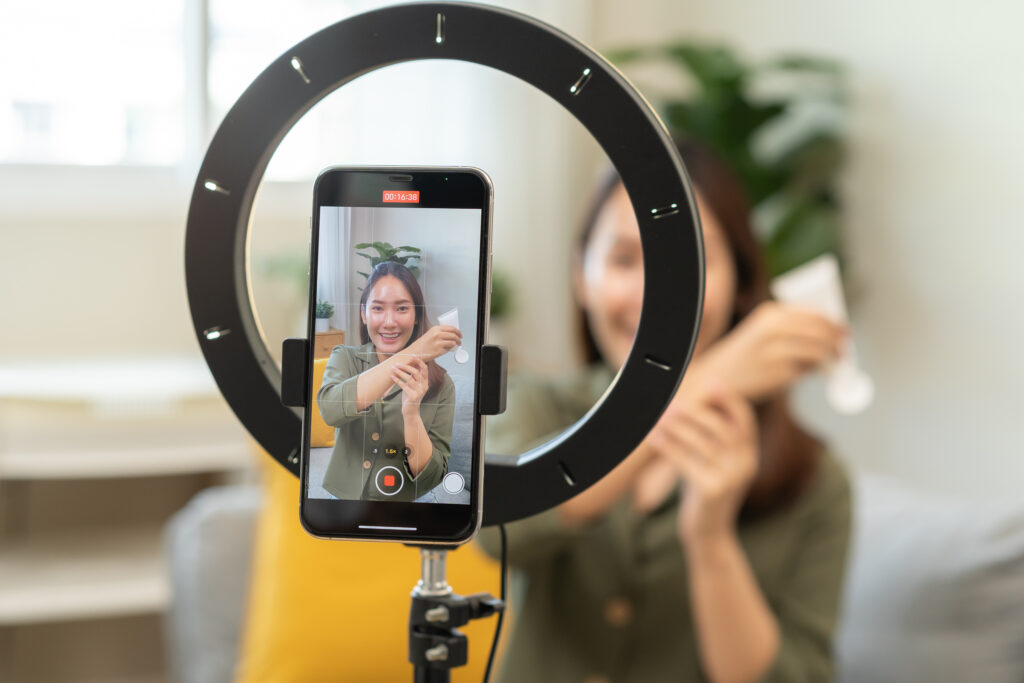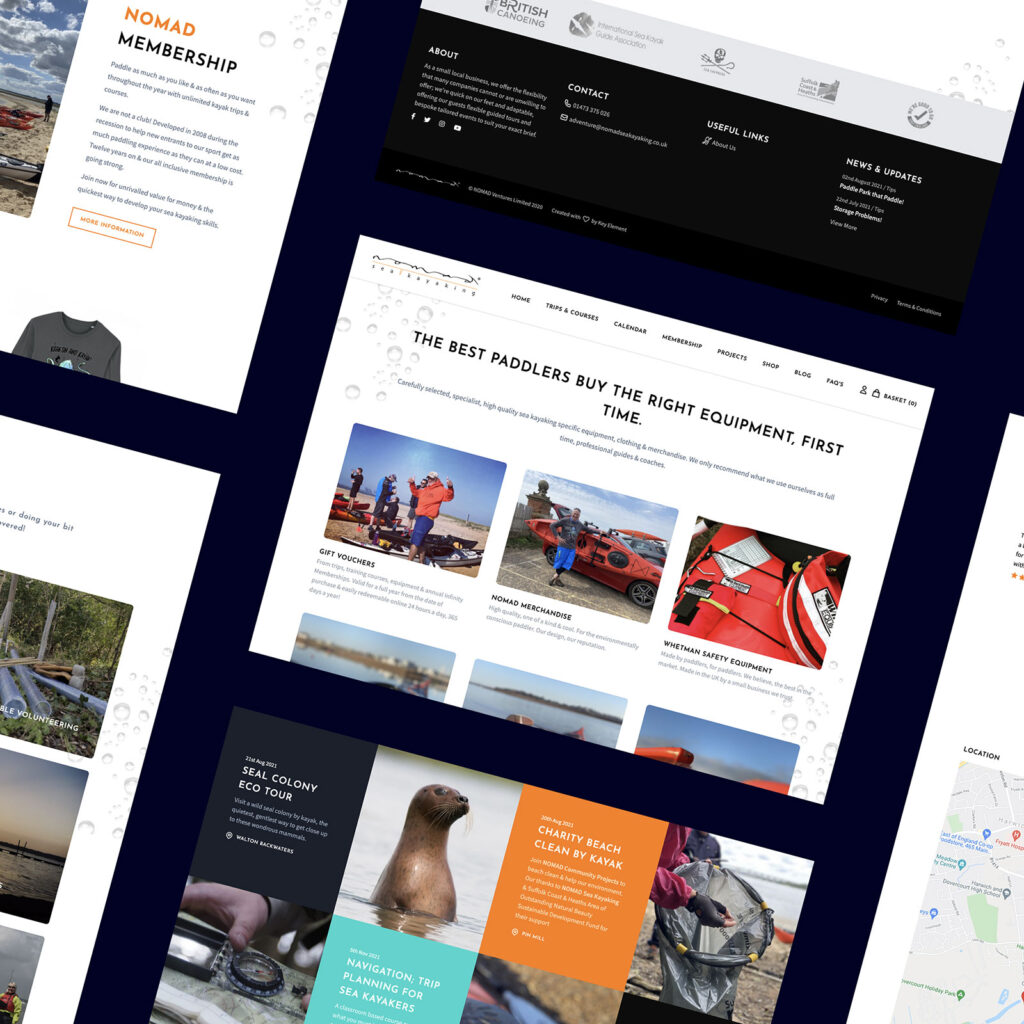Why Video Content Is the Most Engaging & Effective Type of Digital Media

In today’s saturated digital landscape, grabbing and keeping your audience’s attention is more challenging than ever. With content available at our fingertips 24/7, most users are no longer willing to spend time reading long-form blogs or interpreting static infographics. Instead, they’re turning to video content, a medium that combines visual, auditory, and emotional appeal to captivate viewers in seconds.
In fact, 91% of businesses use video as a marketing tool, according to Wyzowl’s 2024 State of Video Marketing Report. And it’s not just about popularity, video consistently delivers better engagement, retention, and ROI than other content formats.
According to the Digital Marketing Institute, consumers are significantly more likely to engage with video than any other form of content. So, what makes video content better, and why is it now the gold standard for digital engagement?
What Makes Video Content So Powerful?
Show, Don’t Tell: Demonstration Made Effortless
Explaining how a product works, guiding a user through a process, or sharing a behind-the-scenes story is far more impactful when shown visually. Video allows you to demonstrate value in real time, something written content or still images can rarely achieve on their own.
For instance, a 2-minute video demo can often communicate more effectively than a 1,000-word article. Visuals help break down complexity, provide step-by-step clarity, and reduce cognitive effort on the part of the viewer. That’s why tutorials, unboxings, and explainer videos continue to perform so well across platforms like YouTube and TikTok. As a result, your audience feels informed, engaged, and empowered — all of which foster trust and higher conversion potential.
Capture Attention and Improve Retention
We live in a world of short attention spans. The average user spends less than 10 seconds deciding whether to stay on a page, and that number continues to drop. But video cuts through the noise by combining visual storytelling, audio narration, music, and motion, activating multiple senses simultaneously. This multi-sensory experience not only attracts attention but also holds it longer.
According to a study by Insivia, viewers retain 95% of a message when they watch it in a video compared to just 10% when reading text. This makes video an incredibly powerful tool not just for initial engagement, but for memory retention and brand recall, two key factors in driving repeat interactions and customer loyalty.
Build Trust Through a Personal Touch
Trust is a cornerstone of digital success, especially in the age of AI-generated content. One of video’s greatest strengths is its ability to humanise your brand. By putting real people, whether it’s a founder, a customer, or an influencer, in front of the camera, you’re creating emotional resonance and authenticity.
Seeing a person’s face, hearing their voice, and watching their body language fosters a deeper connection than static imagery or even the most well-written text. This can be especially important in industries like healthcare, education, and professional services, where trust is critical. A face on screen signals openness and credibility, which in turn increases the likelihood of engagement, shares, and conversions.
Shareability: Video Content Goes Further
Video is inherently more shareable than most other content formats. Social media platforms like Instagram, TikTok, and Facebook actively promote video in their algorithms because it generates more engagement, keeps users on the platform longer, and encourages interaction.
Users are also more inclined to share video content with their own networks. This helps amplify your message beyond your immediate audience, providing what is essentially free word-of-mouth marketing. In fact, research by WordStream found that social video generates 1,200% more shares than text and image content combined.
Moreover, most video platforms offer one-click sharing, remixing, and embedding features, making it easier than ever for your content to spread organically across channels.
Why Video Content is Better on Mobile
Mobile devices now account for over 75% of global video views, according to Statista. Unlike static text, which often requires scrolling, zooming, or adjusting formats, video adapts seamlessly to mobile screens. It delivers rich content in bite-sized, tap-friendly formats that match how people use their devices on the go, in transit, or in short bursts of downtime.
With vertical video formats (like Instagram Stories or TikTok) tailored specifically for mobile use, viewers don’t have to adjust their phone orientation. The interface is built for ease of interaction, swiping up to purchase, tapping to follow, or liking with a single thumb motion. By designing content for where your users already are on their phones, you’re increasing the chances they’ll not only watch but also act on your message.
Why Video Content Outperforms Written Content
While written content still plays a crucial role in SEO and long-form storytelling, video offers greater immediacy and accessibility. It’s easier for most people to understand a concept when they can see it play out rather than decode it through complex text.
Moreover, not everyone enjoys reading or has the ability to do so effectively. Video content supports users with cognitive disabilities, visual impairments, or those who speak English as a second language. Subtitles, audio descriptions, and pacing controls allow viewers to consume information at their own comfort level, increasing overall inclusivity.
It’s also more time-flexible. People may not sit down to read a 10-minute blog post during their commute, but they will often watch or listen to a 90-second video while multitasking. This passive form of consumption aligns perfectly with modern lifestyle patterns.
Why Video Content is Better Than Audio-Only Formats
Audio has surged in popularity thanks to podcasts and voice assistants, but video adds layers of context that audio simply can’t. When viewers can see facial expressions, gestures, product demos, or visual examples, they’re more likely to engage deeply and fully comprehend your message.
Video also offers visual accessibility for deaf or hard-of-hearing users, thanks to closed captions and sign language options. Additionally, the inclusion of graphics or subtitles allows for silent viewing, a crucial feature for users in public spaces or offices.
Whereas podcasts rely entirely on the listener’s attention and imagination, video does the heavy lifting visually and emotionally, offering both active and passive engagement paths.
Why Short-Form Video Content Is Dominating in 2025
Short-form video content, often defined as videos under 60 seconds, has exploded in popularity, with platforms like TikTok, Instagram Reels, and YouTube Shorts leading the charge. These quick-hit videos are perfectly aligned with today’s content consumption habits: short, snackable, and instantly gratifying.
A HubSpot report reveals that 73% of consumers prefer watching a short video to learn about a product or service. These brief videos can deliver value fast, answering a question, solving a problem, or showcasing a product in under a minute.
What makes them even more powerful is their role in the sales funnel. Platforms now allow businesses to link directly to e-commerce products from short-form content, effectively turning attention into action in seconds. TikTok Shop, Instagram’s in-app storefronts, and YouTube’s product tagging features let viewers move from awareness to purchase with a simple tap, no additional searching required.
How Video Content Improves SEO
It’s not just engagement that video boosts; it’s also your position in search engine rankings. Google increasingly prioritises video content on search results pages (SERPs), especially when it’s embedded on a high-quality, relevant page.
Video-rich pages:
- Increase dwell time, telling Google that the content is valuable.
- Lower bounce rates by keeping users engaged longer.
- Open up rich snippet opportunities, with video thumbnails that attract more clicks.
- Create backlink-worthy content that other sites and blogs want to share.
In short: if you’re not using video in your content strategy, you’re leaving SEO value on the table.
Final Thoughts: Why Video Content Deserves a Leading Role
There’s no denying it, video content is no longer optional. It’s the most engaging, shareable, and effective format for telling stories, building trust, and driving conversions.
But that doesn’t mean abandoning blogs, infographics, or podcasts. Instead, use video to enhance and complement your existing content. Repurpose blog content into video summaries. Turn FAQs into explainer reels. Create Instagram Stories from webinar highlights.
Ultimately, it’s not about choosing one format, it’s about understanding your audience and meeting them where they are. And in 2025, more than ever, they’re watching video.
Frequently Asked questions
Is video content better than blogs for SEO?
Not necessarily better, they serve different purposes. Blogs provide depth, keyword relevance, and indexing value, while videos offer engagement and dwell time benefits. The most effective strategy is to combine the two, embedding videos within blog posts to boost SEO and user experience.
How long should a video be to keep viewers engaged?
It depends on the purpose and platform. Short-form videos (15–60 seconds) work best on social media, while explainer or educational videos (2–5 minutes) perform better on YouTube or websites. For deeper content like interviews or webinars, aim for 10–20 minutes, but always monitor retention metrics.
Is professional equipment necessary for quality video content?
No. Many successful creators and brands start with a smartphone, natural lighting, and free editing apps like CapCut or Adobe Express. Authenticity often trumps production value, especially on social platforms.
What platforms should I focus on for video in 2025?
TikTok, Instagram Reels, and YouTube Shorts dominate for short-form. YouTube remains the leader for long-form and educational content, while LinkedIn is ideal for B2B thought leadership and testimonials.
Services you may be interested in

Web Development Services
We specialise in crafting bespoke, user-experience (UX) optimised sites. We are a dedicated team of web designers committed to elevating your brand to new heights

SEO Services
We specialise in catapulting businesses to the forefront of digital visibility, ensuring they not only compete but dominate in their respective markets.
